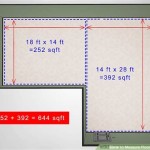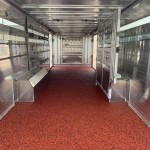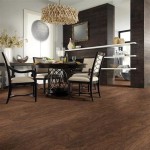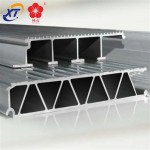Linoleum Flooring Cost Per Square Foot: A Comprehensive Guide
Linoleum flooring, a resilient and eco-friendly option, has experienced a resurgence in popularity. Its durability, versatility in design, and sustainable composition make it an attractive alternative to other flooring materials. Understanding the costs associated with linoleum flooring, specifically the cost per square foot, is crucial for budgeting and planning any home improvement project. This article will delve into the various factors influencing the price of linoleum flooring, providing a detailed breakdown of material and installation expenses.
Linoleum is distinct from vinyl flooring, often mistakenly used interchangeably. Linoleum is composed of natural materials, including linseed oil, rosin, cork dust, wood flour, and pigments, all pressed onto a jute backing. This composition contributes to its biodegradable properties and natural antimicrobial qualities. Conversely, vinyl flooring is a synthetic material made from polyvinyl chloride (PVC), offering different properties and environmental considerations.
The cost of linoleum flooring per square foot can vary significantly depending on several factors. These include the quality of the linoleum, the type (sheet or tile), the complexity of the installation, and the geographic location. Labor costs also contribute substantially to the overall expense. A thorough understanding of these cost drivers is essential for informed decision-making.
Material Costs: Sheet Linoleum vs. Tile
The form in which linoleum is purchased—sheet or tile—directly affects the material cost. Sheet linoleum generally ranges from $3 to $7 per square foot. Its advantage lies in creating a seamless surface, minimizing the number of seams and potentially reducing the risk of moisture damage. However, sheet linoleum requires professional installation due to its size and the need for precise cutting and fitting.
Linoleum tiles, on the other hand, typically cost between $4 and $10 per square foot. Tiles are easier to handle and install, making them a more approachable option for DIY projects. Linoleum tiles are available in various sizes and shapes, including squares and planks, offering design flexibility. However, the seams between tiles may be more susceptible to moisture penetration and require proper sealing.
The quality of the linoleum itself also influences the price. Higher-grade linoleum often features enhanced durability, more intricate designs, and superior stain resistance. These qualities come at a premium, increasing the per-square-foot cost. When selecting linoleum, consider the intended use of the space and the level of traffic it will endure. Higher-traffic areas, such as kitchens and hallways, may benefit from investing in higher-quality, more durable linoleum.
Furthermore, consider the thickness of the linoleum. Thicker linoleum provides better sound insulation and a more comfortable walking surface. While thicker options are typically more expensive, their added benefits can justify the additional cost, particularly in areas where noise reduction is desired.
Installation Costs: Professional vs. DIY
Installation costs represent a significant portion of the total linoleum flooring project expense. Hiring a professional installer typically adds $2 to $5 per square foot to the overall cost. This cost covers labor, underlayment preparation, cutting, fitting, and sealing the linoleum. Professional installation ensures proper adherence, minimizes seams, and provides a smooth, even surface, contributing to the longevity and aesthetic appeal of the flooring.
DIY installation can save money on labor costs. However, it requires careful planning, accurate measurements, and the appropriate tools. Improper installation can lead to problems such as uneven surfaces, gaps between seams, and moisture damage, ultimately requiring costly repairs or replacement. If considering DIY installation, thoroughly research the process, acquire the necessary skills, and ensure access to the correct tools.
Preparing the subfloor is a crucial step in both professional and DIY installations. A level, clean, and dry subfloor is essential for proper linoleum adhesion. Subfloor preparation may involve leveling uneven areas, patching holes and cracks, and cleaning the surface. Depending on the condition of the existing subfloor, these preparations can add to the overall cost of the project. For example, if the existing subfloor is significantly damaged, it may need to be replaced entirely, increasing both material and labor expenses.
The complexity of the installation also affects the cost. Rooms with intricate layouts, numerous corners, or unusual shapes require more cutting and fitting, increasing labor time and expense. Similarly, installing linoleum around fixtures, such as toilets or cabinets, demands precision and adds to the overall installation cost.
Additional Factors Influencing Cost
Several additional factors can impact the overall cost of linoleum flooring. Removing existing flooring, for instance, adds to the expense. The cost of removing old flooring varies depending on the type of material and the difficulty of removal. Some flooring types, such as ceramic tile or hardwood, may require specialized tools and techniques, increasing removal costs.
Underlayment is often recommended for linoleum installations. Underlayment provides a smooth, even surface for the linoleum to adhere to, improving its durability and comfort. The cost of underlayment typically ranges from $0.50 to $1.50 per square foot, depending on the type and thickness. While it adds to the initial expense, underlayment can extend the lifespan of the linoleum and enhance its performance.
Sealing the seams of linoleum, especially in tile installations, is crucial for preventing moisture penetration. Sealing helps to protect the subfloor from water damage and prevents mold growth. The cost of sealing materials is relatively low, but the labor involved can add to the overall expense. Proper sealing ensures the longevity and hygiene of the linoleum flooring.
Geographic location also influences the cost of linoleum flooring. Labor rates and material prices vary depending on the region. Areas with higher costs of living typically have higher labor rates for installation services. Additionally, the availability and demand for linoleum in a particular area can affect material prices. Comparing quotes from multiple suppliers and installers is essential to obtain the best possible price in a specific geographic location.
Finally, consider the cost of trim and molding. Trim and molding are used to cover the edges of the linoleum and provide a finished look. The cost of trim and molding varies depending on the material and style. Options include wood, vinyl, and metal, each offering different aesthetic and functional properties. Choosing trim and molding that complements the linoleum and the overall design of the space enhances the finished look of the flooring.
In summary, the cost of linoleum flooring per square foot encompasses material costs (sheet or tile, quality, thickness), installation costs (professional or DIY, subfloor preparation, complexity), and additional factors (removal of existing flooring, underlayment, sealing, geographic location, trim and molding). A detailed assessment of these factors is necessary for accurate budgeting and informed decision-making when planning a linoleum flooring project.
The long-term benefits of linoleum flooring should also be considered when evaluating costs. Linoleum is a durable material that can last for decades with proper care. Its natural antimicrobial properties and resistance to allergens make it a healthy flooring option. Furthermore, its sustainable composition aligns with environmentally conscious building practices. While the initial cost of linoleum flooring may be higher than some alternatives, its longevity and environmental benefits can make it a cost-effective choice in the long run.
Maintaining linoleum flooring is relatively simple. Regular sweeping or vacuuming removes dirt and debris, preventing scratches and wear. Occasional damp mopping with a mild detergent helps to maintain its appearance and cleanliness. Avoid using abrasive cleaners or harsh chemicals, as they can damage the surface of the linoleum. With proper maintenance, linoleum flooring can retain its beauty and functionality for many years.
Ultimately, selecting the right linoleum flooring requires careful consideration of budget, design preferences, and functional requirements. By understanding the various cost factors and evaluating the long-term benefits, homeowners can make an informed decision that aligns with their needs and provides a durable, sustainable, and aesthetically pleasing flooring solution.

Linoleum Flooring Pros And Cons Forbes Home

How Much Does Linoleum Flooring Cost 2024

Cost To Install Vinyl Flooring Fixr

How Much Does Linoleum Flooring Cost 2024 Data Angi

Average Cost Of Vinyl Flooring Installation In 2024 Forbes Home

The Complete Guide To Flooring Costs By Type Twenty Oak

Cost To Install Vinyl Flooring Fixr

Vinyls Vs Linoleum Flooring Major Differences Pros Cons And Costs Forbes Home

How Much Does It Cost To Install Vinyl Flooring Modernize

Linoleum Vs Vinyl Floors Modernize
Related Posts








